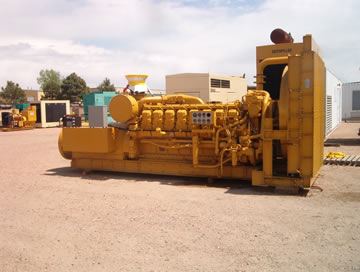|
In 1994 the EPA along with major diesel engine manufacturers (Caterpillar, Cummins, Detroit, and others), and the California Air Research Board (ARB) collaborated to release a structured plan aimed at reducing the amount of diesel engine emissions. The program was a reaction to a government study on the effect of diesel emissions on overall air quality. The study identified that diesel emission levels of NOx, carbon monoxide (CO), hydrocarbons, and particulate matter were a substantial contributor to poor air quality in the United States. These regulations were also designed to help states become compliant with the Clean Air Act and its requirements on certain levels of pollutants. The program implemented the reductions on a tiered timing structure (Tier 1, Tier 2, Tier3, and Tier 4) according to the size and use of the engine. These standards began implementation in 1996 and continue over a 20 year period.

The original restrictions in the earlier stages of the program were largely designed to reduce the amount of pollution produced from vehicles and non-road diesel engines and fuel. However, until recently, these standards were not applicable to stationary diesel generators. On July 11, 2006 a new directive was set forth to make the new regulations applicable to newly manufactured stationary diesel engines like the ones used in diesel power generation sets.
Previous emission regulations for diesel generator sets were handled by individual state and local authorities. Most of these regulations were based on the number of hours the diesel generator was operated during a year. Less stringent regulations were imposed on standby diesel generators, whose usage is infrequent and typically for short periods of time, with the restrictions increasing for generators that operated more regularly as a prime power source or in times of peak energy demand.
The following chart identifies the timed structure of the tiered emission reduction program applicable to diesel gensets:
|
kW
|
hp
|
2006
|
2007
|
2008
|
2009
|
2010
|
2011
|
2012
|
2013
|
2014
|
2015
|
2016
|
2017
|
|
0 - 7
|
0 - 10
|
|
|
|
|
|
|
|
|
|
|
|
|
|
8 - 18
|
11 - 24
|
|
|
|
|
|
|
|
|
|
|
|
|
|
19 - 36
|
25 - 48
|
|
|
|
|
|
|
|
|
|
|
|
|
|
37 - 55
|
49 - 74
|
|
|
|
|
|
|
|
|
|
|
|
|
|
56 - 74
|
75 - 99
|
|
|
|
|
|
|
|
|
|
|
|
|
|
75 - 129
|
100 - 173
|
|
|
|
|
|
|
|
|
|
|
|
|
|
130 - 224
|
174 - 301
|
|
|
|
|
|
|
|
|
|
|
|
|
|
225 - 449
|
302 - 602
|
|
|
|
|
|
|
|
|
|
|
|
|
|
450 - 560
|
603 - 751
|
|
|
|
|
|
|
|
|
|
|
|
|
|
> 560
|
> 751
|
|
|
|
|
|
|
|
|
|
|
|
|
| |
|
|
|
|
|
|
|
|
|
|
|
|
|
| |
|
- Tier 2 |
|
|
|
|
|
|
|
|
|
| |
|
- Tier 3 |
|
|
|
|
|
|
|
|
|
| |
|
- Tier 4 (interim) |
|
|
|
|
|
|
|
|
|
| |
|
- Tier 4 (final) |
|
|
|
|
|
|
|
|
|
Since the program initially targeted diesel engines used in vehicles, Tier 1 engine conversions had already been implemented from 1994 to 2006. Tier 2 and 3 emission reductions had also begun for certain sizes and applications of diesel engines and had begun being phased in during 2000-2008. Therefore new diesel genset manufacturers were confronted with the tough task of using newer Tier 2 and Tier 3 compliant engine designs for their diesel gensets beginning on January 1, 2007. Older, used diesel generator sets were not required to be compliant under the guidelines of the program and must confirm to the local and state regulations in which they are operating.
In achieving these new emission regulations, engine manufacturers were confined to altering the composition of the diesel fuel and the engine design during the first three tiers of the program. In order to reduce the levels of certain exhaust pollutants, the sulfur content of diesel fuel was lowered; electronic engine controls were used to more efficiently operate the engines, as well as numerous other engine modifications. However, during the final phase (Tier 4) after-treatment of the exhaust may be employed to meet the requirements.
For more information on some of the local and state requirements in your area one potential place to start is with your local state government website. You can also find details on updated EPA regulations and facts about all the diesel engine and generator related emissions using one of the following links:
http://www.epa.gov/otaq/largesi.htm
http://www.epa.gov/nonroad/
|